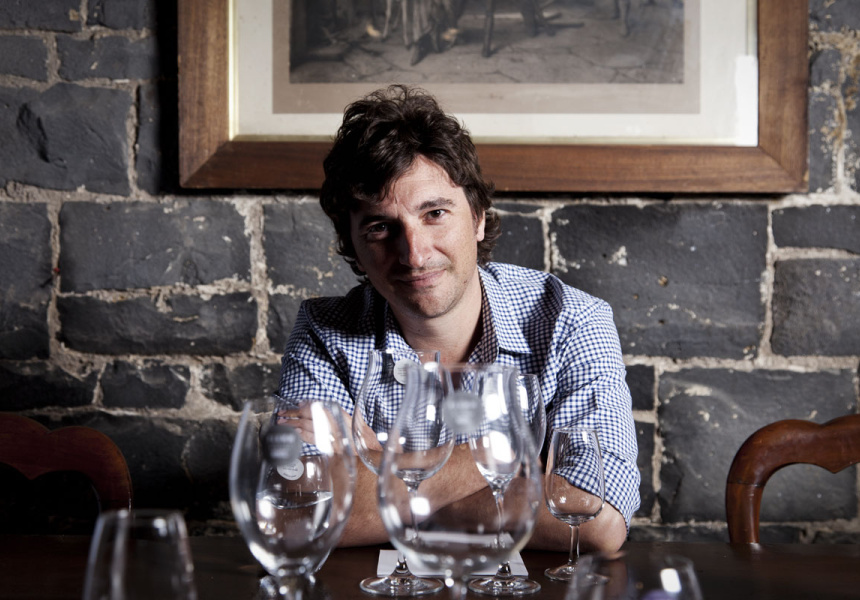Whether we’re sipping fine wine, cocktails or craft liquors and beer, drinking has become more about the art of taste and experience than necessity. Imbibing is now a genuine cultural component of our lives. But as we enjoy a drink or two, we often overlook the vessel through which we drink – the glass.
We all know not to drink wine from mugs or plastic cups, but some dedicate their lives to in pursuit of creating the perfect glass.
Born and bred in Melbourne, Plumm Glassware has done just that. Despite being only four years young , they are producing some of the highest quality glassware on the market. To Plumm, it’s all about enhancing the drinking experience, a lot of which comes right down to the glass shape.
Never miss a Melbourne moment. Make sure you're subscribed to our newsletter today.
SUBSCRIBE NOWBut what really piqued our interest in Plumm is their specialty hand blown crystal range. Trying to imagine the process of turning raw materials into seamless, crystalline structures often feels like trying to reach back into some ancient part of human history. But the art of glass blowing is alive and well.
It is in King & Godfree’s subterranean, stone-walled wine room that we sit down with wine writer, author, sommelier and Plumm collaborative partner Matt Skinner to learn more about what it takes to design a glassware range and how to make the perfect glass by hand.
Plumm knew that they had a lot of research and testing ahead of them in order to design a successful range of glassware in such a well-established field. So, after years of research, the Plumm team collected 20 of the most popular glasses used in homes and restaurants and shipped them, along with a box of wines, to prominent grape growers, wine masters and producers all over the world. Then, they waited for feedback.
To the Plumm team’s surprise, the results were fairly consistent and simple: “Most people gravitated to a handful of a specific shapes for specific wines,” Skinner explains. And from this feedback, Plumm’s classic five shape set was born – two glasses for reds, two for whites and one for sparkling.
The idea of shaping wine glasses to enhance the wine variety is not new. But for those of us who are not professional sommeliers, the sheer variety of glassware available can feel overwhelming. But Plumm offers a comprehensive yet simple and easy to navigate range.
Next for the Plumm team was to find glass producers. Skinner explains that, “being an Australian first, and being designed here in Melbourne, Plumm would have ideally wanted to manufacture the glasses here. But we just don’t have the [crystal] expertise here.”
When the crystal industry can’t come to you, you must go where the hand blown crystal industry thrives: Slovakia, where aspiring glass blowers have to study for at least five years before they can blow glass.
There is something truly fascinating about trying to unlock the secrets of transforming earthly elements like sand, salt and minerals like limestone into seemingly perfect symmetrical glasses with stunning clarity, consistency and fineness. So, we asked Skinner to share with us what he learned about the art of glass blowing from his last visit to the factory.
As you might imagine, the first thing you notice when you walk into a glass blowing factory is the heat, which radiates out of the furnaces burning at 1100 degrees Celsius.
While each individual glass looks seamless, every handmade glass is actually made up of two pieces of glass (made by two separate craftspeople), which are fused together. “The two guys,” Skinner says, “will take this molten liquid that comes out of he furnace and one guy will pull the stem while the other makes the bowl for the glass.”
Once removed from the furnace, the molten glass cools down to 900 degrees (“That can still poke a hole through you,” Skinner jests) and is within minutes shaped into the base or bowl for the glass.
To create the bowl for the glass, the glass blower blows into what looks like a long pipe with a glowing, amber bulb of molten glass at the end. And with a constant stream of breath and strategic spins of the pipe, the bulb of amber quickly takes the shape of a glowing wine glass.
But what’s nearly impossible to describe is the actual physical and mental skill required to consistently create these shapes: “There’s no mold – it’s all memory,” Skinner emphasises.
Once shaped and joined, the glasses then go into a ‘cooling oven.’ “I know that sounds ridiculous,” Skinner laughs. “But, it basically looks like a giant pizza oven with a conveyer.” The ‘cooling oven’ allows for the glasses to gradually cool over a period of seven hours, going from 900 degrees to just a couple of hundred degrees, strengthening them and preventing them from cracking.
Next, “someone will file the inside of the rim of the glass, polish the glass, and then check for imperfections,” Skinner explains.
But what is it that makes drinking out of hand blown crystal so special? Skinner says the feel of the glass is most striking. “The clarity and fineness is just amazing. It feels beautiful to hold.” And he is right, the crystal range has an almost weightless feel in the hand.
But how hand blown crystal really increases our appreciation of drinking, Skinner explains, “is the way the beverage moves out of the glass and into your mouth. It almost feels seamless – like it’s an extension of your tongue. There are subtle differences in aromatic qualities between [the machine and handmade] ranges, but it’s more about transition, about the way it leaves the glass.”
After all the glass isn’t just a humble medium for imbibing – it is just as important as the liquid inside of it.
Skinner sums it up succinctly: “If you care about what you drink, you should care about what you drink from.”



